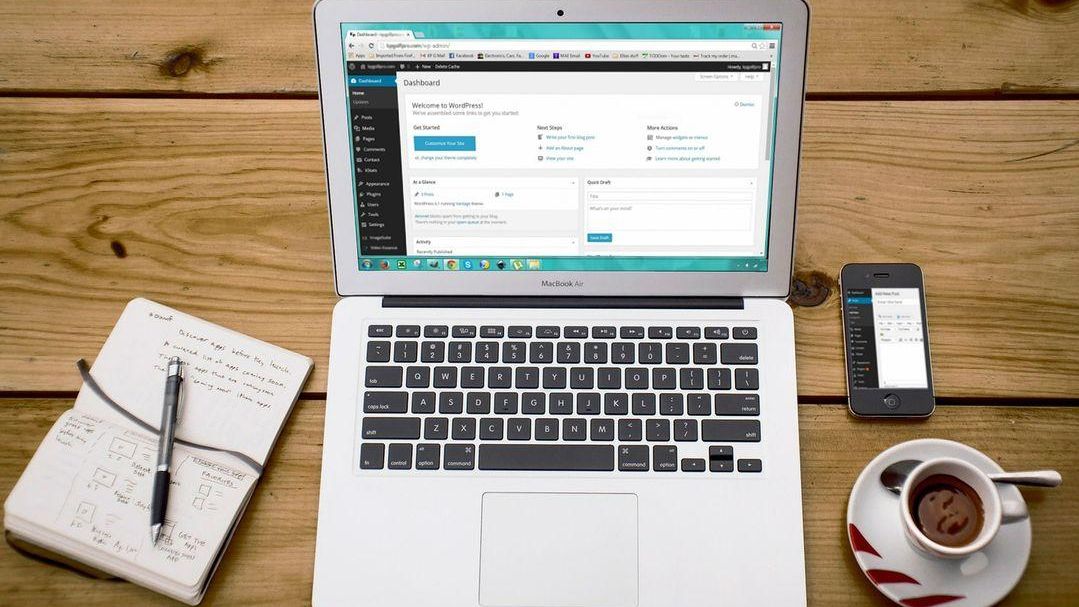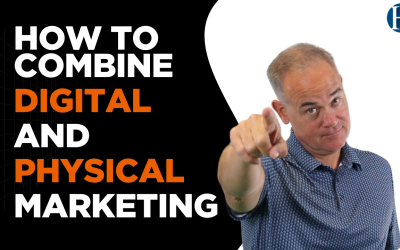 Today I want to share with you the checklist we have developed that guides us like a roadmap during the design process of each new website we build. And now you can use this checklist to get your own perfect website.
Today I want to share with you the checklist we have developed that guides us like a roadmap during the design process of each new website we build. And now you can use this checklist to get your own perfect website.
Not every business needs to pay for a web designer. I mean, I don’t go to the doctor for every little medical thing and I don’t get the advice of an attorney before I sign every single document in my life. However, sometimes I need a doctor, sometimes I need an attorney, and sometimes you need a web designer like us. But for the times when a do-it-yourself website works, we hope this article helps.
What is the perfect website?
Before we get into the checklist, let’s define ‘the perfect website“. Website design, like graphic design, video production, or pizza topping preferences is subjective. What people think makes a website “perfect” is influenced by their age, experiences, personality, education, etc. However, there are some elements that are objective that lay a foundation to get you that perfect website.
For example, your website should:
- Be easy to read by humans, search engines, and adaptive equipment for people with disabilities.
- Load fast, people won’t wait.
- Be responsive to different screen sizes.
- Add value to the people who visit it.
The Checklist For An Objectively Perfect Website
So technically, this is going to be checklists inside of a checklist.
First, let’s explore the steps you’ll want to take to get to your finished website. Then, below, I’ll explore each of these in a bit more detail.
Table of Contents:
- Determine your website strategy.
- Develop a plan to market your website.
- Plan for your website’s setup.
- Prepare the content for your website.
- Know how you are going to maintain your website.
- Build your website.
Determine Your Website Strategy
The most important outcome in this step is to determine your primary call to action, also know in the biz as CTA, to meet your website’s goal.
If you get stuck, wrestle with this truth about websites. Every website solves a problem, even your’s. If you aren’t sure of the problem your website solves or should solve, email me and I’ll help you figure that out
Questions to determine your website’s goal.
- What do I want people to know?
- Why do I want them to know it?
- What do I want people to do?
- Why do I want them to do it?
Questions to help you determine your website’s strategic call to action based on your goal.
- What is the most valuable action every website visitor needs to take on my site for them?
- What is the most valuable action every website visitor needs to take on my site for my business?
Now, can you match these two up into one call to action? If so, that’s CTA gold!
Other factors to determine at this step.
- Who is your ideal audience? (influences look and feel)
- Where will they be when they need/visit the problem your website solves? (influences if you should design mobile or desktop first)
- How are you solving the visitors’ problem? (influences functionality and features)
BACK UP TO TABLE OF CONTENTS
Develop A Plan to Market Your New Website
This might seem strange to put your marketing plan at the top of the list like this, but it’s important to know your keyword strategy before you do anything that follows.
A keyword is a word or short phrase you are going to design your site around to help people find your website in search engines.
You can have more than one keyword. At Hasseman Marketing we are developing keyword strategies around “Video Production“, “Promotional Premiums“, “Graphic Design“, etc. So, instead of putting all of these on one page, we developed our website so each keyword has its own page. Another way to think about this might be to ask yourself, “what are the different services we offer?” Or, “what problem (or problems) are we helping people solve”.
Also, for local SEO it’s important you are consistent with your company name, address, and telephone number. Setting up your Google My Business is a great step to take here.
Additional things to consider at this stage:
- What social media platforms will you be on? (influences functionality and layout decisions for your website)
- Will you have and maintain a blog? (influences layout and functionality)
- Will your SEO strategy be local, national, worldwide, or a combination? (influences the copywriting you’ll want to do, alt tags on your images, etc)
BACK UP TO TABLE OF CONTENTS
Plan Your Website’s Setup
Now that you know what you are going to have on your website, you are almost ready to start actually building the website.
But first, there are a view things to decide, even if you are about to do a redesign of an older website.
- Domain Name. You want to get a quality and easy to remember URL for your website. The URL is the “www.thisisyoururl.com” that you will promote as your address on the internet.
- Website Hosting. This is where your website will live. You can use a drag and drop builder like WIX or Weebly, in which case they will be your host. Just make sure you check the fine print in the agreement. Sometimes they claim ownership of your content. Or, you could use a CMS (content management system) like WordPress. Which currently is over 30 percent of the internet. Even big brands use WordPress. Target, Sony, Best Buy, BBC America, Disney, Facebook Newsroom, and many many more. We use WordPress for all of our sites and the sites we build for website owners. So for hosting; if you use WordPress, Joomla, or another self-hosted CMS get a good one. We use and recommend Siteground. (just a quick note: that link there is called an affiliate link. That means if you click on it and sign up for hosting with Siteground, we make a small commission. Affiliate marketing is something you might want to research as a way to monetize your new website if that’s a goal you have.)
- Branded Email. Be professional. You’ll look better and be taken more seriously if you have an email that is [email protected] compared to using [email protected]. Most website hosting companies offer an email solution…but we have never found one we like. We use Office 365 at Hasseman Marketing, but we typically set our website owners up with GSuite by Google because it’s a bit easier to use.
- Theme. BTW, If you do use WordPress, you are most likely going to want to use a Theme. We use and recommend Divi by Elegant Themes. (This is another affiliate link like the one we explained above.) At the time of writing this post, over 570,000 websites are built on Divi. It has a robust support network, and you can find thousands of articles and YouTube videos on how to do all kinds of things in Divi. It’s the most popular premium Theme currently on WordPress right now for both do-it-yourselfers and WordPress web designers like us.
- Email List. You are more than likely going to want to gather emails to build a list. We use both Infusionsoft and Mailchimp and we love them both.
IMPORTANT SECURITY NOTE: It is best and safest if you use three different providers for your domain name, website hosting, and branded email. If you get all three at one place and just one of them get’s hacked…then the hackers have access to all three and can really hurt your business. So, use three different providers and three different password for each one. I know, all those passwords are a pain, that’s why we use LastPass.
BACK UP TO TABLE OF CONTENTS
Prepare The Content For Your Perfect Website
Based on your strategic goals, call to action, and SEO strategy you are ready to start gathering and preparing your content. We strongly recommend hiring a professional copywriter who specializes in online marketing copy. Or at least visit several top quality sites and look carefully at their language.
A couple of tips.
- Write for people first and search engines second.
- Write in a logical order using headings based on a hierarchy. If this point doesn’t make sense, it will when you start building your site. You will have several options for headings. H1, H2, H3, etc. I remember the first couple of websites I built for fun. I thought these just helped me present titles in different formats. So, I would style the H1 and the H2 to look almost the same, except have a different color maybe. Then I learned I was doing it all wrong. The H1, H2, H3, etc helps search engines and screen readers make sense of your website. What you can’t see as you are reading this post is the HTML code that computers can see. The title of this post is “wrapped” in H1 tags. The next subheading is inside H2 tags and then I have an H3 tag, and back to an H2 tag. Think back to writing outlines in school. This is the same idea. Now, these title tags are important in helping search engines see what your content is about but most importantly, it shows the search engine you have thought of the visitor experience.
- USER EXPERIENCE IS QUEEN. Content is King, but the experience of your website users, known as UE or UI in the biz, is queen as it relates to ranking in search engines. BTW, why is ranking important? How many times have you scrolled to the 4th page in Google to find a car mechanic? The ranking of your site is vital if you want to spend less money to get more visitors so you can make more money in the long run of your business.
- Think accessibility. Keep in mind that there are hundreds of thousands of people on the internet with disabilities that deserve to be able to access your website.
- Use common language. If you must use an acronym, explain it. Just because I know what WYSWYG means, What You See Is What You Get, doesn’t mean everyone else in the world does.
- Rename your images before you upload them. Name your pictures with names that tell people what the image, or at least what the page the image is on, is all about. Make sure here you add the “alt description”. That’s an option you will see when you are building your website. It’s found in different places, and its critical for screen readers and search engines. Seriously, this is probably the biggest place do-it-yourselfers miss out on adding a super easy way for people to find your content. If you have a pizza shop in Coshocton. Name every picture a little bit different along these lines. “Best pizza in Coshocton” “This is our award-winning pizza in Coshocton” “Get a Pepsi delivered with your pizza anywhere in Coshocton”. Honestly, if you do this, it won’t be long before your pizza shop is the first result in Google anytime someone searches for “pizza in Coshocton.”
- Resize your images before you upload them into your new perfect website. (notice how I used my keywords “new perfect website” there…and then I did it again here, that’s just a little SEO for ya). Your pictures don’t need to be more than about 1500px wide. And should definitely be under 200 kb in size. If you need help with this, check out this website where you can resize images for free.
BACK UP TO TABLE OF CONTENTS
Know How You Are Going To Maintain A Perfect Website
Your website will need TLC after it’s built. After all, there is no denying it, the number of people who hack into websites for fun is on the rise. And your website will be a target one day for a hack. Preventative maintenance is the key. Or as grandma always said, “an ounce of prevention is worth a pound of cure.” I mean, my grandma didn’t say it, but maybe yours did.
- Start with good quality hosting. Again, we strongly recommend Siteground.
- Use strong passwords and change them every so often.
- Update your theme and plugins. Now, this may only apply to WordPress. I don’t use other website content management systems (CMS), so I can’t speak into them. But in WordPress, you should update your theme, plugins, and WordPress itself weekly. PRO TIP: Wait at least 24 hours after an update is available before you install it. Sometimes an update can break your site. Let others find out before you do. Also, Tuesdays seem to be the best day to updates.
- Use plugins and third-party security services. Just Google option for the platform you are building your site on, and you will find what you need.
- Once a year at least run a security check on your site. We use Sucuri
BACK UP TO TABLE OF CONTENTS
Build Your Website
Now that you have your plan in place, it’s ready to give life to your new website.
While building your site, keep referring back to your strategy and marketing plan to ensure you aren’t drifting.
Since you may be using any number of Content Management Systems like; WordPress, WIX, Joomla, or Drupal we are going to close this post here. Building a website on these different CMS’s is going to be unique to that system. And the point of this blog post isn’t to teach you step-by-step how to build a website, but what it takes to get the perfect website…objectively of course.
Never miss an update, sign up for our VIP newsletter here.





